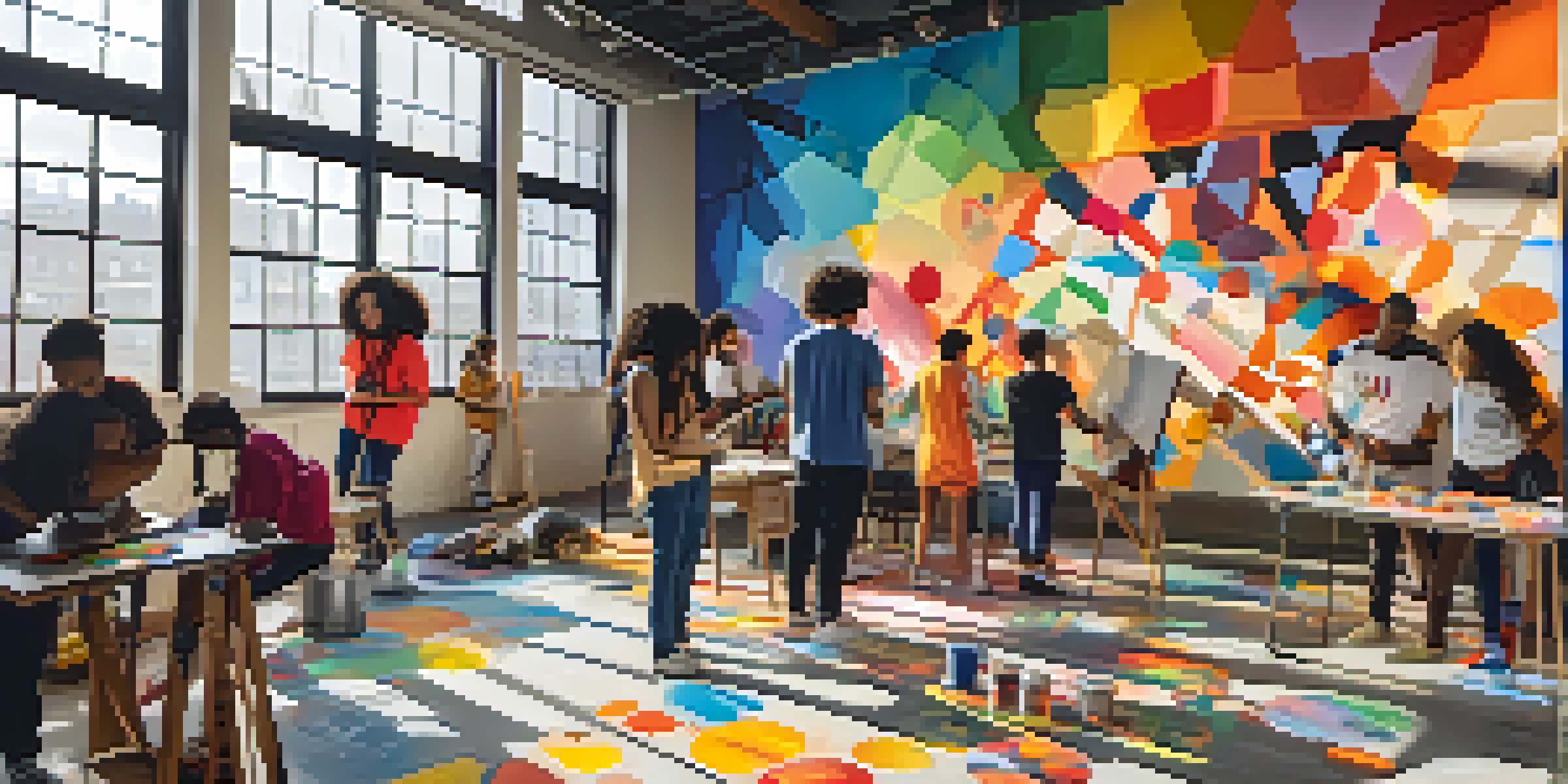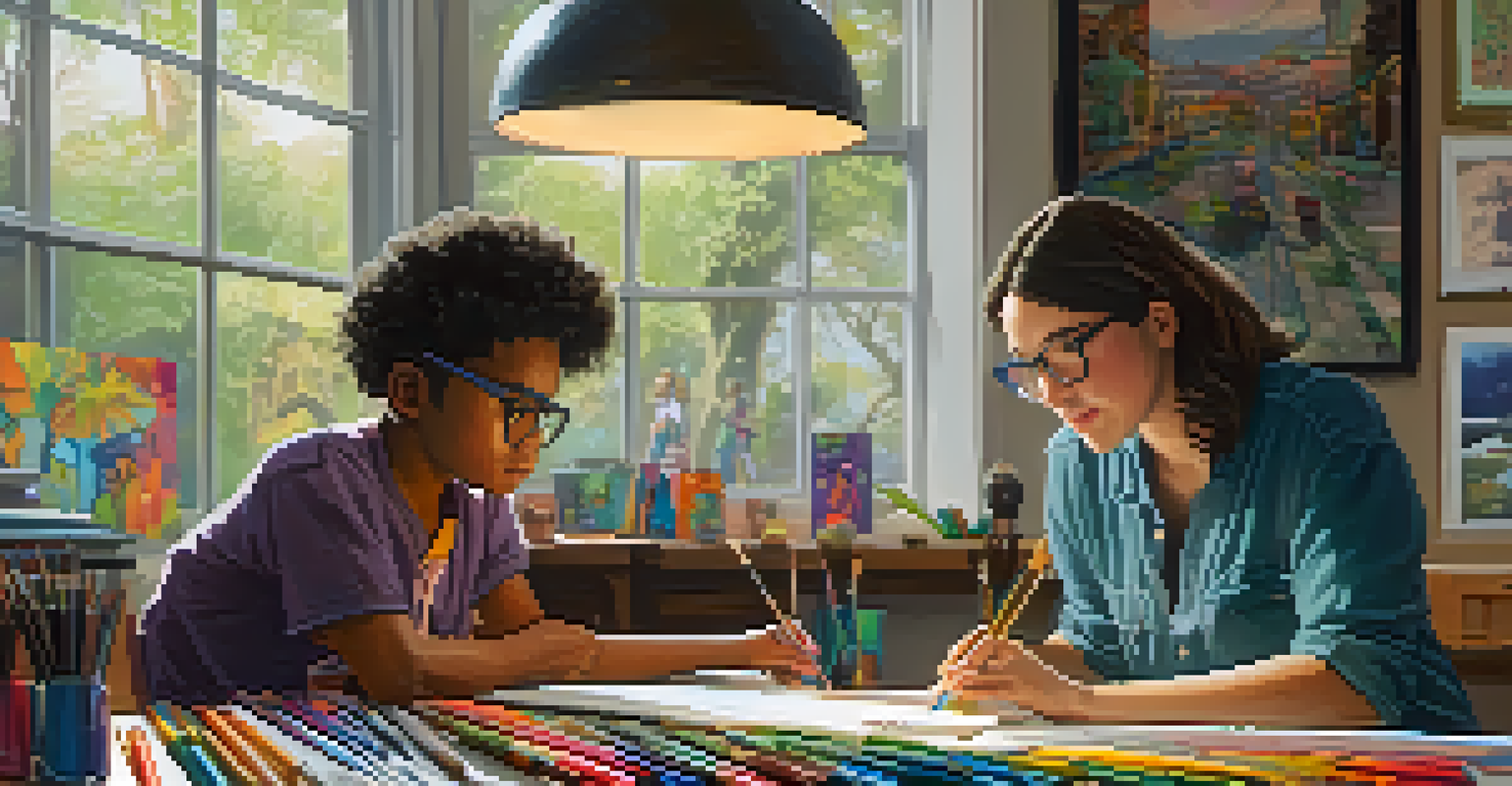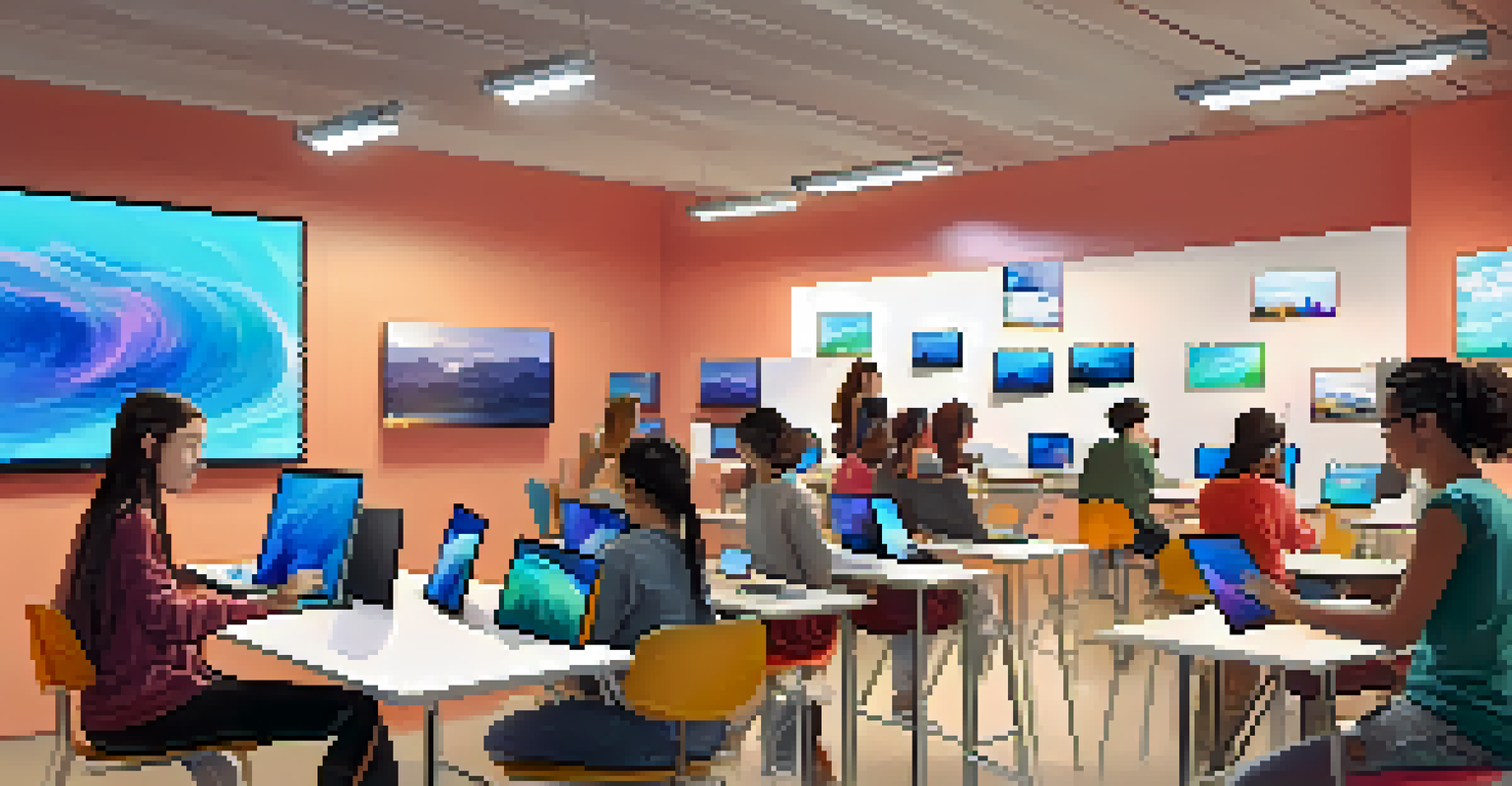Engaging Youth in Accessible Art Programs

Understanding the Importance of Accessible Art Programs
Accessible art programs are essential for fostering creativity among youth. They provide opportunities for self-expression, which can be especially vital for young people facing challenges. When art is made accessible, it opens doors for everyone, regardless of their abilities or backgrounds.
Art is not freedom from discipline, but disciplined freedom.
Moreover, these programs help cultivate a sense of community and belonging. Young individuals can connect with peers and mentors, enriching their social skills and emotional well-being. This connection often leads to a greater appreciation for the arts and its transformative power.
Ultimately, accessibility in art is not just about physical access; it’s about creating an environment where all voices are heard. By emphasizing inclusion, we can inspire the next generation of artists and thinkers, ensuring that diverse perspectives are represented in the art world.
Strategies for Engaging Youth Creatively
To effectively engage youth, art programs must incorporate methods that resonate with their interests. This can include using contemporary themes or digital media, which are often more relatable to younger audiences. By aligning with their passions, programs can spark genuine interest and participation.

Hands-on workshops and interactive sessions are also key in drawing young people in. When youth can actively participate, rather than just observe, they are more likely to feel invested in the experience. Consider using collaborative projects where participants can express their ideas and creativity together.
Fostering Creativity Through Access
Accessible art programs empower youth to express themselves, fostering creativity and self-discovery regardless of their backgrounds.
Finally, integrating technology into art programs can enhance engagement. Tools like graphic design software or video editing apps allow for innovative expressions and can attract tech-savvy youth. This blend of art and technology not only captures attention but also prepares them for future opportunities.
Building Community Partnerships for Success
Community partnerships play a significant role in the success of accessible art programs. Collaborating with local organizations, schools, and businesses can provide necessary resources and support. These partnerships can also help spread the word about programs, reaching a larger audience.
Every artist was first an amateur.
For instance, schools can integrate art programs into their curriculum, ensuring that students have access to creative outlets during their formative years. Additionally, local businesses might sponsor events or provide materials, fostering a sense of communal investment in the arts.
By engaging various stakeholders, programs can create a network of support that benefits everyone involved. This collaborative approach not only enhances the quality of the programs but also builds a stronger community around the arts.
Creating Safe and Inclusive Spaces for Art
A safe and inclusive space is crucial for encouraging youth to express themselves through art. This means not only physical accessibility but also fostering an environment where everyone feels valued and respected. Establishing clear guidelines on respect and inclusion can help create a positive atmosphere.
Additionally, training facilitators to recognize and address biases can empower them to support all participants effectively. When youth see that their identities and experiences are acknowledged, they are more likely to engage wholeheartedly. This sense of safety is foundational for fostering creativity.
Building Community Through Art
Collaborating with local organizations and schools enhances art programs, creating a supportive network that enriches the community.
Moreover, incorporating feedback from participants can further enhance the inclusivity of the program. Regularly seeking input allows youth to voice their needs and preferences, making them active participants in shaping their environment.
Utilizing Mentorship to Inspire Young Artists
Mentorship can be a powerful tool in engaging youth in art programs. Connecting young artists with experienced mentors provides guidance and encouragement. This relationship not only nurtures artistic skills but also helps build confidence and resilience.
Mentors can share valuable insights from their own experiences, offering perspectives that can inspire youth to pursue their passions. By showcasing diverse career paths in the arts, mentors can help broaden the horizons of young participants, revealing the many possibilities within the creative field.
Additionally, mentorship fosters a sense of belonging and community. When young people feel supported by mentors, they are more likely to take risks in their artistic endeavors and develop a lifelong love for the arts.
Leveraging Technology to Enhance Art Engagement
Technology can significantly enhance how youth engage with art programs. Digital platforms allow for a broader reach, enabling more young people to participate, regardless of geographical barriers. Online workshops and virtual galleries can create opportunities for interactive engagement.
Moreover, using social media to showcase participants' work can boost their confidence and encourage others to join in. Sharing their creations online not only validates their efforts but also connects them with a larger artistic community.
Mentorship Inspires Young Artists
Connecting youth with mentors cultivates artistic skills and confidence, opening doors to diverse career paths in the creative field.
Incorporating digital tools, such as apps for digital drawing or video creation, can also make art more accessible. These technologies can simplify the creative process and make it more appealing to a tech-oriented generation.
Evaluating and Adapting Programs for Continuous Improvement
To ensure the effectiveness of art programs, regular evaluation is essential. Gathering feedback from participants can provide insights into what works well and what needs improvement. This ongoing dialogue helps keep the program relevant and responsive to the needs of youth.
Additionally, analyzing participation rates and outcomes can help identify trends and areas for growth. By understanding which aspects resonate most with young artists, programs can refine their approaches and offerings.

Ultimately, a commitment to continuous improvement fosters a culture of adaptability. This flexibility not only enhances the experience for participants but also ensures that the program remains impactful and engaging over time.